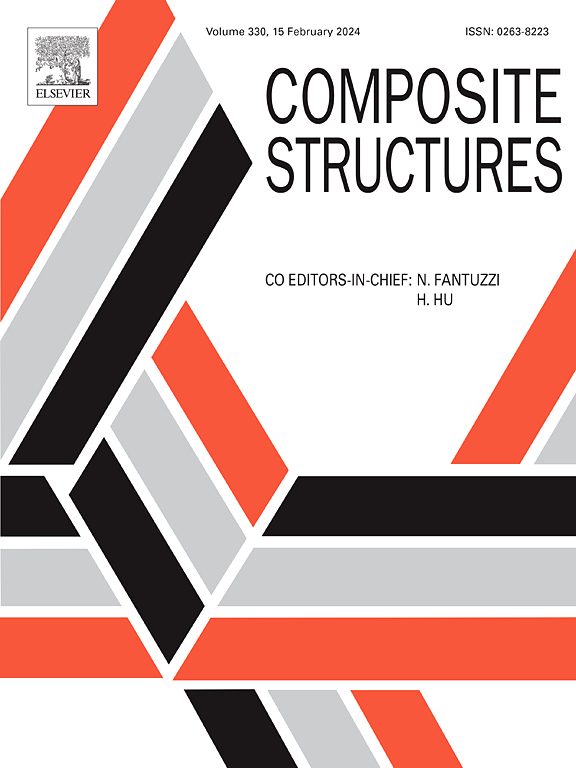A new bionic lattice structure design and compressive mechanical properties based on the beetle elytra
IF 6.3
2区 材料科学
Q1 MATERIALS SCIENCE, COMPOSITES
引用次数: 0
Abstract
To meet the demand for lightweight and high-strength materials in engineering applications, this research draws inspiration from the microscopic support structure of the beetle’s elytra. A novel hourglass-shaped lattice (HSL), based on biomimetic principles, was designed by extracting and transforming the hollow strut features of the beetle’s elytra. Nylon PA2200 was chosen as the matrix material for the specimen, which was fabricated using additive manufacturing and then subjected to a quasi-static compression test. The experimental results showed that the standard HSL structure (HSL-2S) possessing two connecting rods had a maximum increase in elastic modulus by 54.89 %, yield strength by 128.99 %, and compressive strength by 218.08 % as compared to the Circle, Square, and Square-incline thin-walled structures. Additionally, this research provided an in-depth analysis of the influence of design parameters, including the number of rods and the thickness of the shell, on structural performance using the method of controlled variables. The results showed that a reasonable arrangement of rods most effectively improves the mechanical performance of the structure. The research findings offered valuable design references for the development of lattice structures with excellent mechanical properties and efficient energy absorption.
求助全文
约1分钟内获得全文
求助全文
来源期刊

Composite Structures
工程技术-材料科学:复合
CiteScore
12.00
自引率
12.70%
发文量
1246
审稿时长
78 days
期刊介绍:
The past few decades have seen outstanding advances in the use of composite materials in structural applications. There can be little doubt that, within engineering circles, composites have revolutionised traditional design concepts and made possible an unparalleled range of new and exciting possibilities as viable materials for construction. Composite Structures, an International Journal, disseminates knowledge between users, manufacturers, designers and researchers involved in structures or structural components manufactured using composite materials.
The journal publishes papers which contribute to knowledge in the use of composite materials in engineering structures. Papers deal with design, research and development studies, experimental investigations, theoretical analysis and fabrication techniques relevant to the application of composites in load-bearing components for assemblies, ranging from individual components such as plates and shells to complete composite structures.
 求助内容:
求助内容: 应助结果提醒方式:
应助结果提醒方式:


